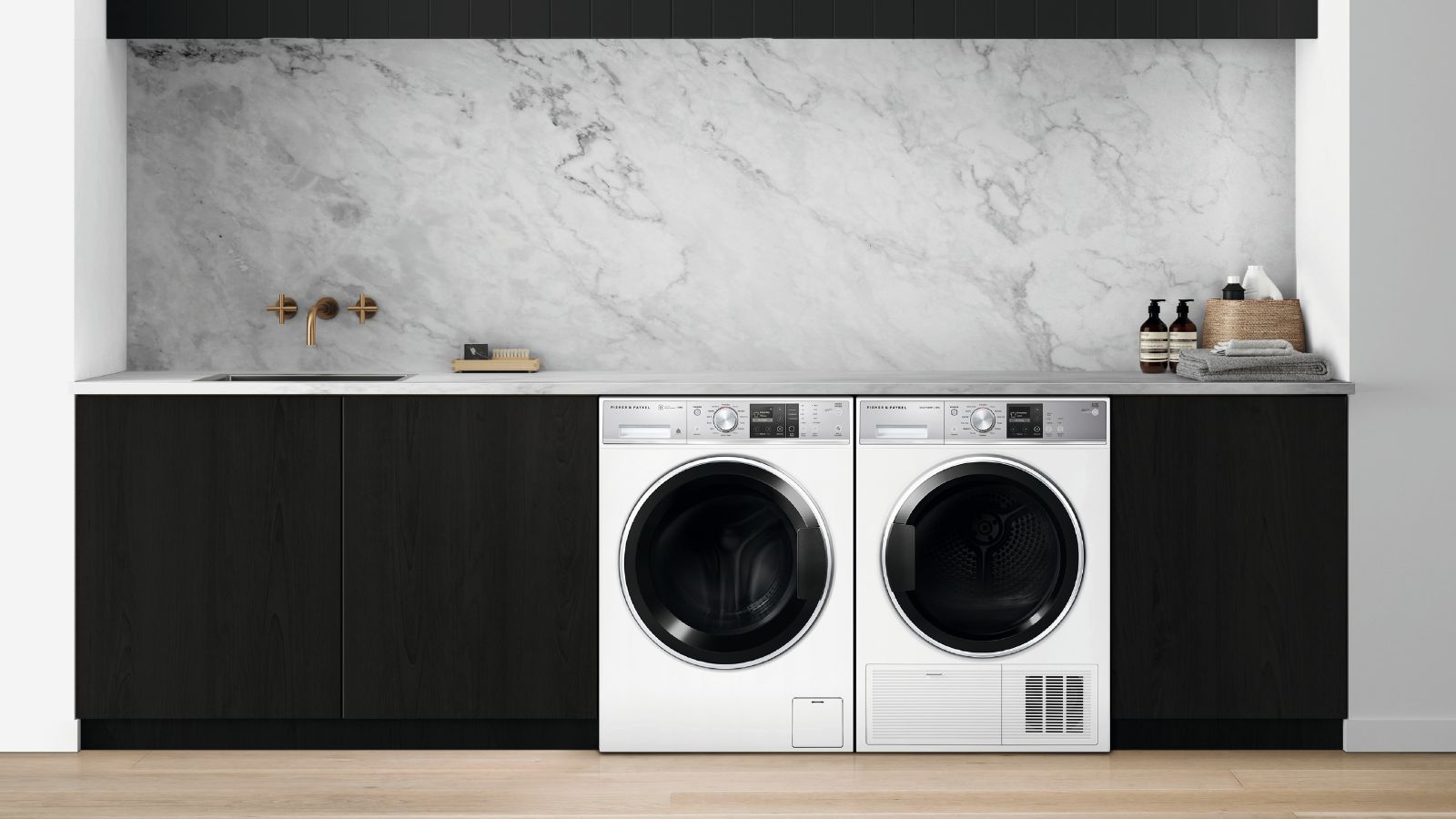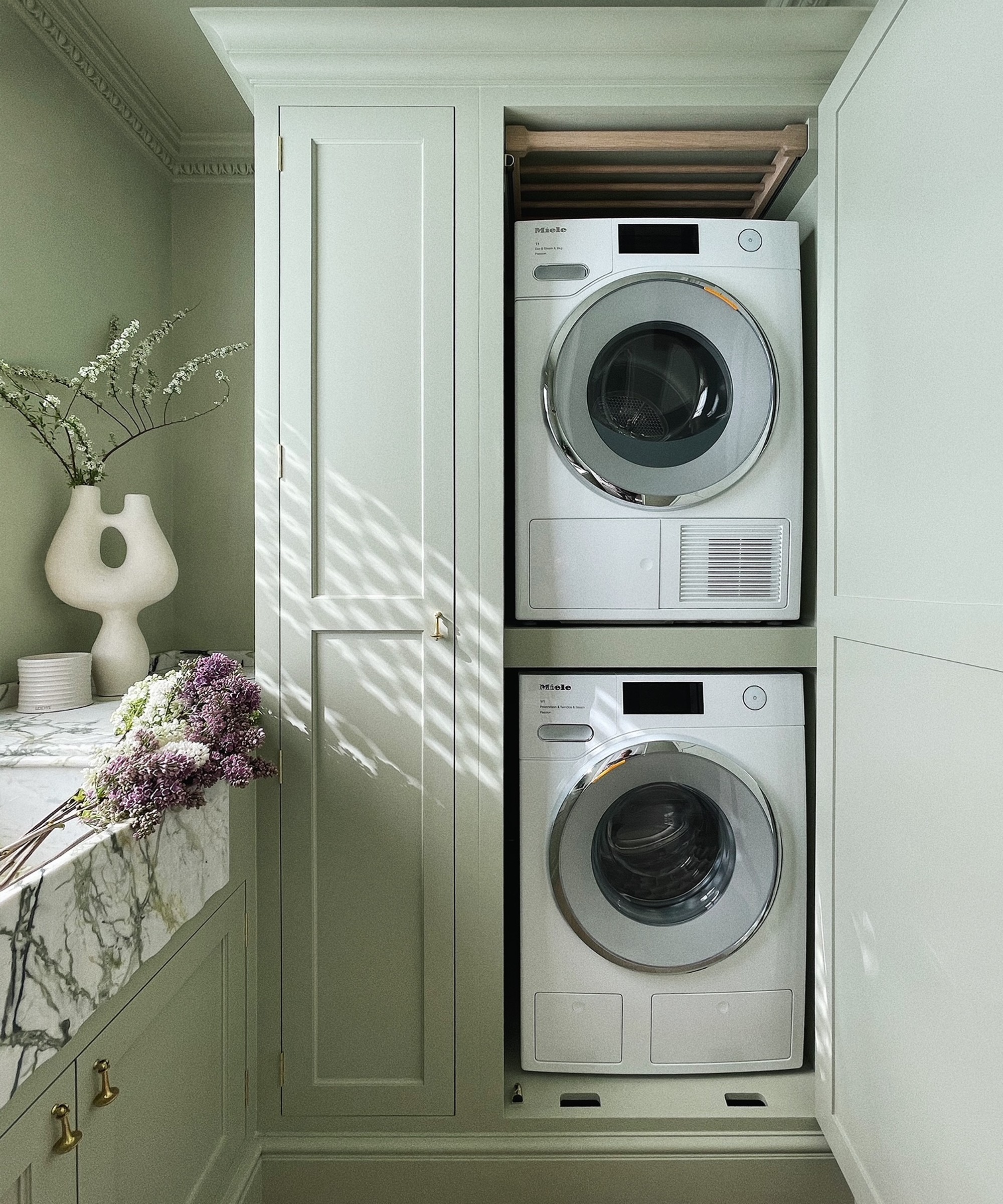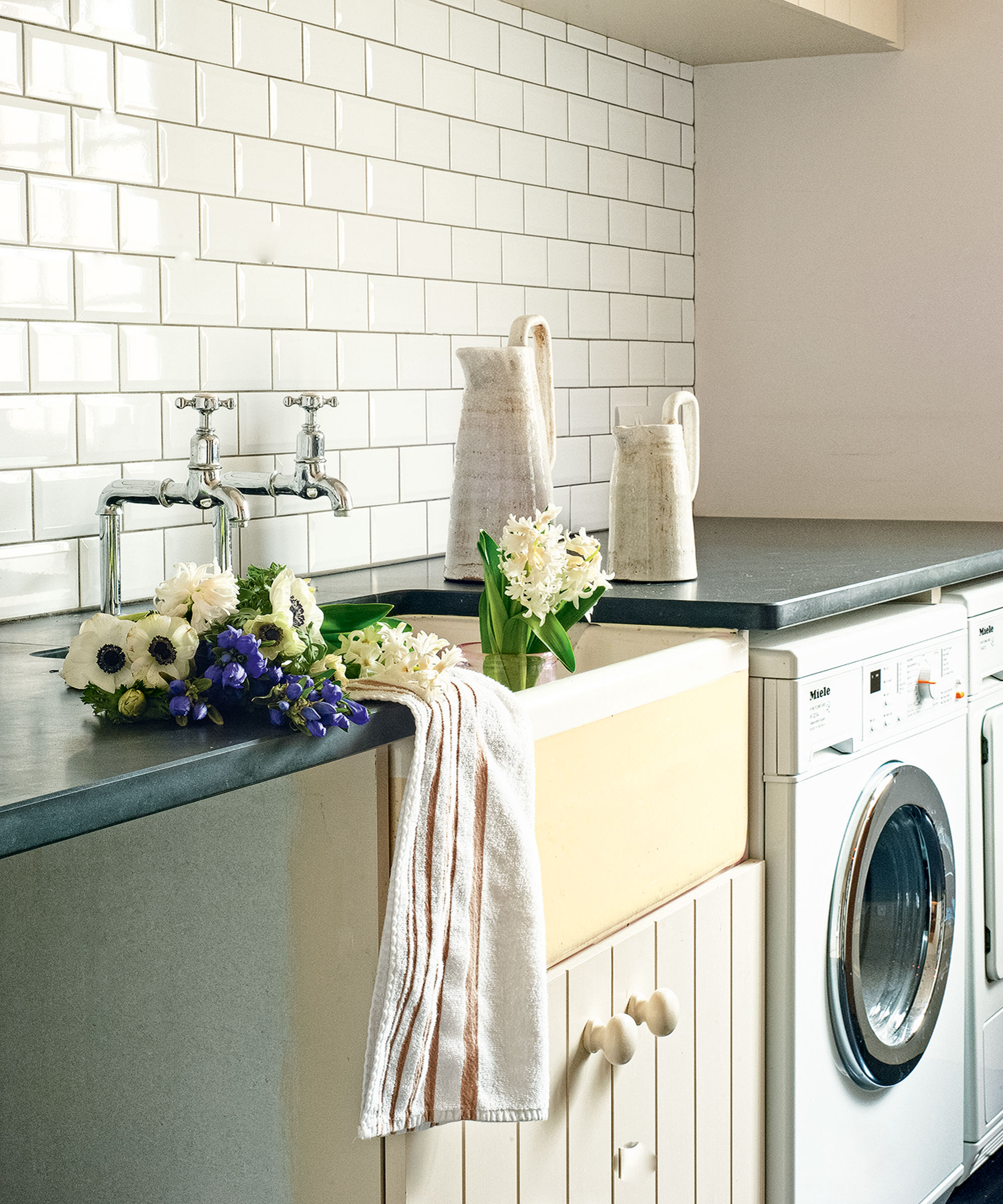
Cleaning your dryer vent is an essential maintenance task that can significantly impact your dryer efficiency, however, this can be an arduous job, so it's essential to determine how often your dryer vents should be cleaned to ensure it functions optimally, without having to tackle this task more often than is necessary.
Whether you hire a professional to clean out your dryer vent or do it yourself, it's important to work out how frequently this cleaning job needs to be scheduled to keep your laundry room functioning smoothly. 'A clogged vent not only reduces the dryer's efficiency, leading to longer drying times and higher energy bills, but it also poses a fire hazard due to the buildup of flammable lint,' explain the experts from KKCleaners, meaning it's important to be vigilant for the signs your dryer vent needs cleaning.
Our experts have explained the different factors that determine how often a dryer vent should be cleaned.
How often should dryer vents be cleaned
'While the general rule of thumb is to clean your dryer vent once a year, some households may need to clean it more often,' explains Mallory Micetich, Home Expert at Angi. 'Thankfully, there are a few telltale signs that your dryer vent needs to be cleaned,' plus, a few factors that will determine how frequently this should be done.
If your machine has been damaged due to infrequent cleaning and needs to be replaced, you can check out our guide for the best clothes dryers.
1. Depending on frequency of use

'The more often you use your dryer, the more frequently you should clean the vents,' explain the experts from KKCleaners. 'For households with large families or frequent laundry loads, more regular cleaning, perhaps every 6 months, might be necessary.'
However, smaller households with infrequent dryer use can extend the cleaning interval to around every 18-24 months.
To determine the ideal cleaning frequency, you can consult with a professional HVAC technician or dryer vent cleaning service.
2. Depending on type of usage

The type of usage the dryer experiences, including how it is used and local conditions can all impact how frequently the vents must be cleaned.
'If the dryer is often used for heavy loads or items that generate more lint, such as towels and comforters, more frequent cleaning may be necessary to prevent clogging,' advises Mohammad Ahmed, home expert and founder of The Home Guidance Blog.
The same goes for households with pets which may have more pet hair mixed with lint, leading to quicker clogging of vent. You can use pet hair remover laundry dryer balls to catch pet hair, from Amazon before drying, reducing the chance this will clog your dryer vent.
Additionally, the experts from KKCleaners say, 'If you live in an area with high humidity, the vent might accumulate moisture more rapidly, leading to mold growth and necessitating more frequent cleaning.'
3. Depending on dryer type

The frequency you should clean your dryer vents will also depend on the dryer type.
'Gas dryers produce combustion byproducts that can create additional buildup in the vent,' explain the cleaning experts at KKCleaners. 'They might need more frequent cleaning compared to electric dryers.'
4. Depending on vent length and configuration

'Dryers with longer vent runs (the ductwork length between the dryer and the outside vent) may require more frequent cleaning, as there's a greater likelihood for lint to accumulate,' explains Josh Mitchell, HVAC technician and the owner of AirConditionerLab.
In such cases, more frequent cleanings, around every 6 to 9 months, are essential to prevent blockages and maintain airflow efficiency.
Furthermore, if your dryer vent has flexible or accordion-style ducts, inspect and clean them more frequently, since they can also trap lint and create airflow restrictions, which can become a safety hazard.
5. Depending on signs the dryer is clogged

'Look out for signs indicating a need for immediate cleaning, such as longer drying times, a musty odor around the dryer, or excessively high dryer temperature during operation,' advises the cleaning experts at KKCleaners. 'These could indicate a blockage in the vent.'
'If you notice signs of a clogged vent, address the issue promptly by cleaning the vent,' agrees Josh Mitchell. 'Ignoring these signs can increase the risk of a dryer fire.'
You can also keep an eye out for excess lint in the lint trap or lint debris outside of the dryer. When lint builds up, the dryer can overheat. This will signify that your dryer vent needs to be cleaned.
Regularly inspect for these indicators that immediate attention and vent cleaning are necessary.
Safety considerations

Regularly cleaning your dryer vents is a simple yet essential task that is crucial for both efficiency and safety.
'Lint buildup in dryer vents can pose a fire hazard,' says Mohammed Ahmed. 'Regular cleaning is crucial for safety reasons, not just for maintaining the efficiency of the dryer.'
Cleaning dryer vents involves potential safety hazards due to electrical components, so whether you are cleaning your dryer vent or bringing in a professional, always unplug the dryer before cleaning.
FAQs
Is DIY or professional cleaning for dryer vents better?
While you can perform basic maintenance tasks to clean your dryer vent, such as cleaning the lint trap after each use, professional cleaning is recommended annually.
'While it’s possible to DIY clean your dryer vent, I recommend bringing in a pro who has specialized tools and experience to safely clean the dryer vent,' says Mallory Micetich, home expert at Angi.
These tools can thoroughly clean vents, removing accumulated lint and debris that DIY methods might miss, so for a thorough clean, consult a professional.
'After cleaning, it’s important to check for any damage to the venting system,' advises Mohammed Ahmed. 'Any found issues should be addressed immediately to maintain safety and efficiency.'







